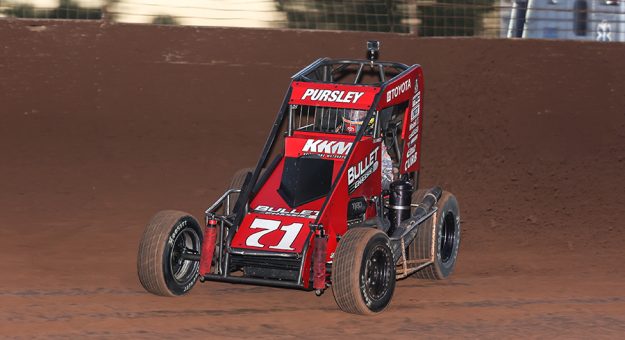The Shepherd Center has been in operation since the 1970s and when Pursley left Atlanta, it is believed he was only the seventh person walk out without crutch or braces. Better yet, he was able to run on a treadmill and ride a bicycle. This was uncharted territory for the staff.
There was still work to do and Pursley returned to Indiana where Dr. Terry Trammel and the staff at Ortho Indy monitored progress with his neck, while he headed to PitFit where many drivers near the Circle City work on rehabilitation and physical conditioning.
The team worked with injured IndyCar driver Robert Wickens and learned a great deal from that experience. When Dr. Trammel examined Pursley at PitFit, he was stunned that his charge could do pushups. Nonetheless, the persistent problem was his left side, so it became important to move away from machines where his body could compensate for this weakness and rely more on dumbbells and other targeted exercises.

Again, the progress was obvious and now the time came to confront the question that was on everyone‘s mind — could Pursley race again?
His doctors told him the fused area of his neck was stronger than that of an average person and in the end, Pursley said the overriding observation was that “this was not something where I should live scared or stop doing what I wanted to do. They said, ‘Go ahead and live your life.‘”
But could he return to form? To get a quick answer to this question he headed to the Toyota Performance Center in North Carolina. His first test came in a racing simulator.
“That was fairly easy and it shocked everyone that my body didn‘t have any false readings and everything went smooth,” Pursley said. “Then they put me in a kart and again that went smooth, then we tested a micro. Everything was so fast and it opened everyone‘s eyes.”
With the Toyota brass on board, it was time for Keith Kunz and associate Pete Willoughby to sign off. The next step in the process was a test at US 24 Speedway in Logansport, Ind.
“I was very nervous,” Daison says, “You hear those stories about people who have big crashes and don‘t come back. That was definitely on my mind. But I feel like it goes back to me not remembering the crash or how it went. It was just about me getting back into the rhythm of driving a race car again and fine-tuning those little details.”
Pursley passed the test with flying colors, gaining speed as the day progressed. Next it was on to Coles County Speedway in Illinois to race a micro sprint. The result? He won four feature events. Next, he returned to US 24 where he competed in four divisions and won three features.
On Sept. 4, Pursley won a POWRi midget race at Missouri‘s Lake Ozark Speedway. Less than 10 months earlier most hoped he would be able to walk again. This moment was almost unfathomable.
The range of emotions experienced by Pursley and his immediate family over this topsy-turvy period is easy for most to grasp. Behind the scenes Keith Kunz and his team also struggled. Kunz has been in the game long enough to suffer the worst this sport throws at you. He admits this time it was different.
“I‘m close to the whole family and I‘m good friends with his dad,” Kunz said. “So this was personal. I thought a lot about the kind of injury this was. When you thought about the possibility of being paralyzed and being in a wheelchair for the rest of your life, you just feel horrible. You ask yourself how did this happen?”
Pursley‘s car was equipped with a crash box that was recovered and he is one of several drivers are using specialty mouth guards that also record critical data. Unfortunately, hismouthpiece flew out on impact and was never found.
Beyond monitoring the situation closely and working with the medical team, Kunz went to work as only he knew how.
